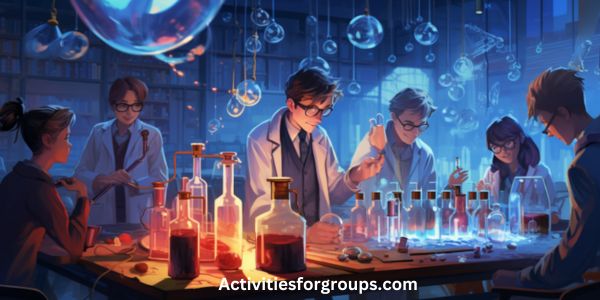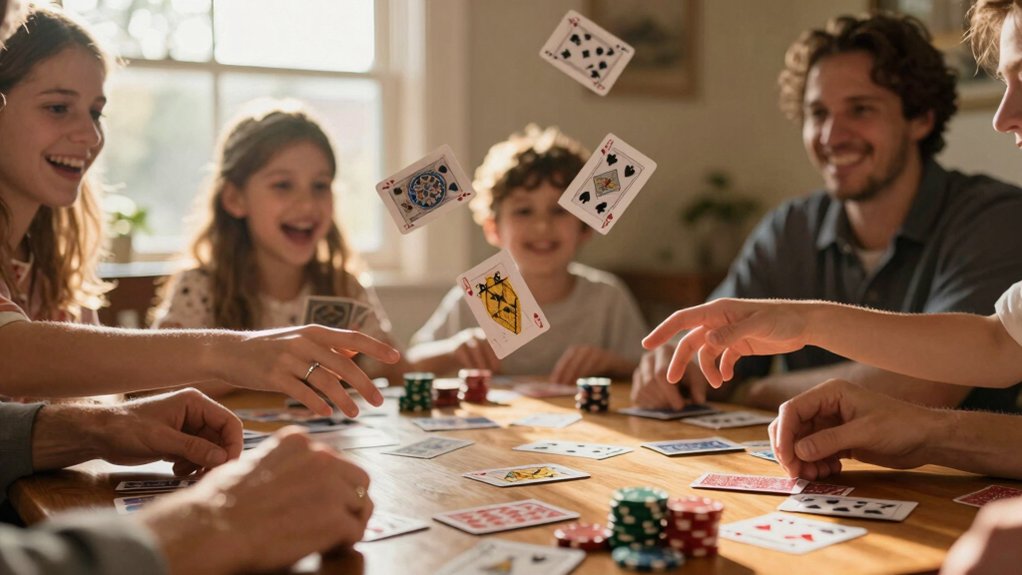Do you want to facilitate effective learning for your students? Group science experiments are a great way to do just that!
Learn how to prepare for and structure group experiments, guide students through the process, and evaluate the results.

With the right setup, your students will be engaged and learning in no time!
Benefits of Group Science Experiments
You’ll find numerous benefits of group science experiments. One of the key advantages of cooperative learning is that it encourages students to communicate and collaborate with one another as they complete the experiment.
This helps to boost problem solving skills as students are required to negotiate and debate ideas while working together.
It also encourages creative thinking as students come up with new and innovative ideas to solve the problem.
Group science experiments also helps to foster a sense of responsibility and ownership as students are responsible for the success of the experiment. Additionally, it helps to create a sense of community and encourages a sense of belonging.
Preparing for Effective Group Experiments
Preparing for group experiments effectively requires you to take certain steps.
First, you should create a schedule that allows for enough time to complete the experiment and for any necessary follow-up activities. Additionally, you need to make sure that the logistics of the experiment are worked out beforehand, such as who’ll be responsible for bringing supplies, what tasks need to be completed, and what the timeline looks like.
You should also create a supplies checklist to make sure that all the necessary items for the experiment are available. This should include items like safety goggles, lab coats, and any other supplies that are necessary for the experiment.
Finally, you need to make sure that everyone participating in the experiment is aware of the safety protocols that are in place. This includes having safety equipment on hand, making sure everyone is aware of any hazards, and having emergency plans in place.
These steps will help ensure that the group experiment runs smoothly and effectively. group science experiment creating a supplies checklist, and ensuring safety protocols are in place, you can facilitate an effective learning experience with a group science experiment.
Structuring Group Experiments

Moreover, you must structure the group experiment correctly to ensure an effective learning experience.
In order to do this, cooperative learning must be implemented. This is done by assigning each group member a specific task and then having them work together to come up with a solution. This type of learning allows students to learn from each other and develop problem-solving skills.
Additionally, peer assessments should be included in the group experiment structure. This encourages students to think critically and evaluate their own work as well as the work of others. It also helps to ensure that everyone is on the same page and understands the concepts being taught.
Finally, it’s important to provide feedback to the group after the experiment is complete. This will help them to identify any areas where they can improve and will also give them a sense of accomplishment.
With the right structure, group science experiments can facilitate an effective learning experience.
Tips for Guiding Group Experiments
You’ll need to guide your group as they complete their experiments, so here are some tips to help you do that.
First, allow time for collaborative problem solving and encourage team dynamics. This will help the group work together to develop creative solutions to the tasks they’re assigned.
Second, give clear instructions and be available to help guide the group as needed. Provide resources and materials to support their work, and make sure everyone is clear on the outcomes they’re aiming for.
Third, give the group time to work independently. This will encourage them to come up with their own ideas and solutions to the problems they face.
Evaluating Group Experiment Results

Once the group experiments are completed, you’ll need to evaluate the results. This will help to ensure that the students have achieved the desired learning goals and that the overall experiment was a success.
Evaluation of the results should be done in an open, facilitative learning environment, allowing students to engage in collaborative exploration of the data.
You can start by having each student or group of students present their data, such as photographs, videos, or graphs. Encourage students to discuss the meaning of their results and what conclusions they can draw from them.
This will help them develop their analytical and critical thinking skills. Additionally, it’s important to ask questions to challenge the students and help them understand the results more deeply.
Encourage students to reflect on their experience and how it relates to the overall lesson. Ask them to draw connections between their experiment and the scientific principles they’re learning. You can also ask them to think about any improvements they can make for the next experiment.
Frequently Asked Questions [FAQs]
What Are the Risks Associated With Group Science Experiments?
Group dynamics and safety protocols are key when it comes to group science experiments. There are risks, such as distractions, incorrect execution of experiments, and potential injury. Be sure to take the necessary precautions.
How Can I Ensure the Safety of the Participants in the Group Experiment?
Assess risks and implement safety protocols to ensure the safety of participants in a group experiment.
How Should I Choose the Group Experiment for the Learners?
Consider the learners’ level of knowledge and interests when choosing the group experiment. Analyze data to form hypotheses on which experiment is best suited for the group.
What Materials Are Necessary for a Successful Group Experiment?
For a successful group experiment, you’ll need collaborative brainstorming and resource sharing. Gather materials like lab equipment, sample materials, and safety gear. Have everyone contribute ideas and resources to make the experiment a success.
How Can I Make Sure the Group Experiment Is Engaging?
To engage the group, encourage peer collaboration and creative, innovative solutions. Stimulate discussion and seek input from every member. Make it fun and rewarding to participate.
Conclusion
Group science experiments are a great way to facilitate effective learning. With the right preparation and guidance, students can build meaningful relationships, develop their problem-solving skills, and work together to create something special.
Group science experiments can provide a unique learning environment for students to explore and grow, so don’t be afraid to give it a try!




Leave a Reply